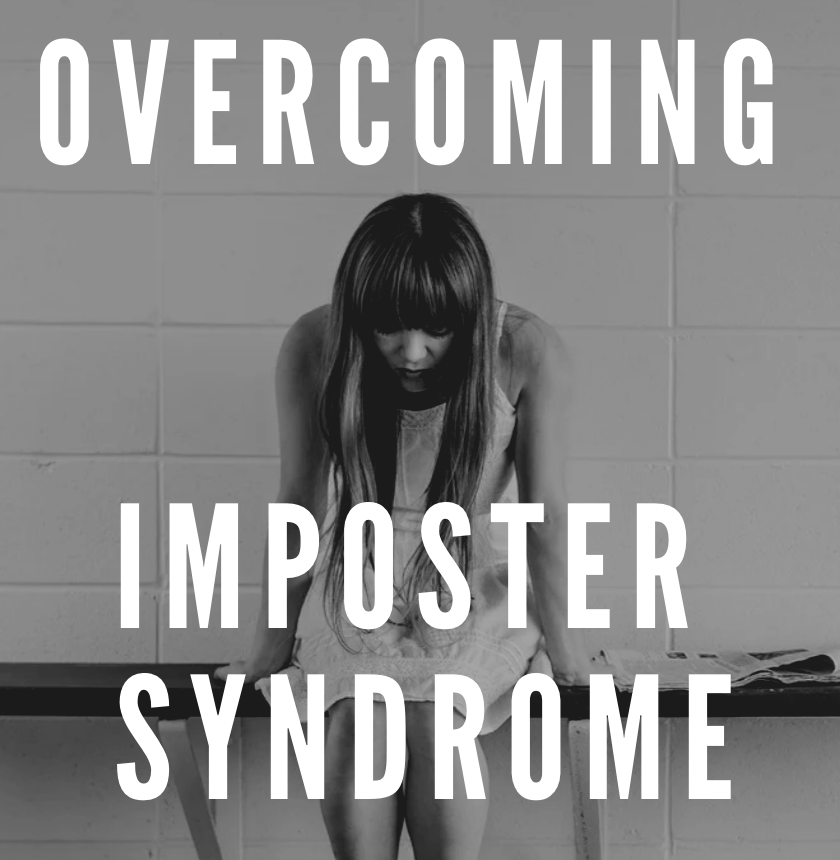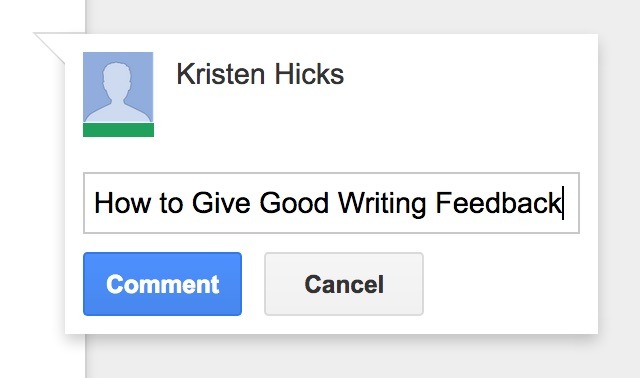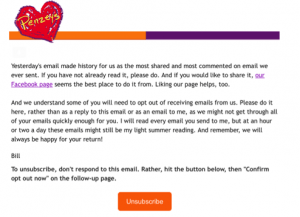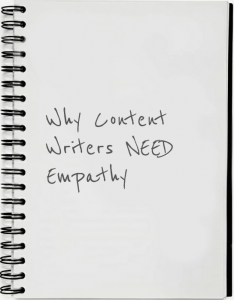You see a job ad that sounds perfect. It’s exactly the kind of job you’ve been wanting. But then you scroll down to the list of required qualifications. It’s long. It’s intimidating. You’re starting to worry it’s not even worth trying to get this job. It’s obviously meant for someone better than you.

Or you see a conversation about rates in your favorite freelance writers’ group and marvel at the numbers other people mention. You can’t imagine ever being good enough to confidently throw out a rate that high.
These feelings come from the same place: imposter syndrome.
It’s a problem that plagues people across industries and in all kinds of roles. And it’s dangerous. It keeps people from taking opportunities they deserve, drawing reasonable boundaries, and charging the professional rates their work is worth.
I was recently a guest on the Deliberate Freelancer podcast with Melanie Padgett Powers to talk about my experiences with imposter syndrome, and tips for how to overcome it.
Listen to the full conversation here.
What is Imposter Syndrome?
Imposter syndrome is the worry that you’re not good enough, without any evidence that’s the case, and often in the face of evidence to the contrary. In professional scenarios, it means doubting your abilities in areas where you actually have an impressive amount of skill and knowledge.
For freelancers, it can take the form of entering into client relationships with a feeling that you’re lucky to be hired—like the client’s doing you a favor. For employees, it can mean a fear of speaking up to voice your opinions, worrying that your contributions aren’t valuable.
Across the board, it leads to professionals failing to ask for what they’re worth financially, and leaves people vulnerable to exploitation and mistreatment by those willing to take advantage of a lack of confidence.
What Causes Imposter Syndrome?
Imposter syndrome can affect anyone, but it does tend to show up more often in those with less privilege in our society. Cultural power dynamics play a role in who feels the most comfortable taking up space and voicing opinions.
For me, being raised in a patriarchal culture as a woman contributed to the imposter syndrome I had in my early years in the professional world. My default is to be people pleasing, which too often translated to feeling guilty about drawing reasonable professional boundaries with clients, or asking for (what I now know to be) standard professional rates.
That doesn’t mean imposter syndrome is specific to any one gender, although I do believe it’s more likely to affect those marginalized in our society in some way. The line “aspire to the confidence of a mediocre white man” is an adage for a reason—those that can expect power and respect from the world around them as a given are less likely to doubt themselves. Whereas those living in a world that constantly demands they prove themselves worthy of basic respect are prone to internalize that messaging.
The root causes of imposter syndrome relate to a lot of much bigger issues in our society—capitalism, racism, patriarchy, and ableism, to name a few examples. But as individuals we can tackle our own feelings of imposter syndrome while continuing to live with the power dynamics that create it. I don’t have to personally topple the patriarchy to beat my own imposter syndrome (although that doesn’t mean I won’t try).
7 Tips for Overcoming Imposter Syndrome
1. Pay more attention to the positive voices in your life than the negative.
One of the dirty tricks our minds play on us is amplifying negative feedback, while downplaying positive. Most of us could have ten people telling us we’re awesome and one saying we suck, and that one person will take up more brain space than the other ten combined. Changing that balance takes intentional work.
Learn to listen to the people that give you positive reinforcement. Trust that they know what they’re talking about.
And when you receive negative feedback, walk away from it for a bit to get some emotional distance. Once you’re past the initial gut punch, come back to it with fresh eyes. Is it constructive feedback that you can take to improve? Is it actually telling you that you suck and you’ll never make it as a respectable professional? (Hint: it’s probably not.) And if it’s not constructive—if it’s mean or patronizing—is it something you should be treating as legitimate measure of your worth? (Hint: probably not).
2. Collect and save testimonials and recommendations.
This helps with the first step. Any time you get an email with positive feedback, save it and pull it back up on the days you’re doubting yourself. When you have clients or employers that like your work, ask them to send over a few lines about it.
LinkedIn allows you to send a request to people you’ve worked with asking for a recommendation. It’s quick and easy for them to do, and gives you a collection of positive words to pull up anytime those negative thoughts creep in.
And for freelancers, testimonials do the double duty of being a confidence booster when you need it and a marketing tool you can add to your website.
3. Take stock of your experience.
Another good exercise to tackle when you’re facing imposter syndrome is to sit down and write out a list of jobs, projects, or clients you’ve managed. Similar to what you do when writing a resume (but it can be messier since it’s just for yourself), list the skills you developed and put to use, and any goals you accomplished in the process. Tally up the years you’ve spent doing a particular type of work.
If you’re new to the professional world or a particular field, the list can be about what you accomplished in school, volunteer roles, or extracurricular activities. Chances are, you’ve still built up some useful skills and knowledge that are worthy of respect. You don’t have to be an expert with decades of experience to bring value to a job or project. If you know you possess solid research skills, a willingness to learn, punctuality—whatever your list of top attributes are—put those down in writing in this step.
4. Dump toxic clients and bosses.
While you can work on giving more space to the positive voices in your life than the negative, if you have a toxic boss or client, their voice will be loud and persistent for as long as they have power over you.
If you’re a freelancer, one of the biggest benefits of working for yourself is the power to be picky about who you work with. If you have a client that’s all negativity, all the time, end things as soon as possible to open up room in your calendar for better clients.
Note: I’ve spoken on this topic before! Get some advice on how to break up with bad clients here.
If you’re in a job with a toxic boss, this is a lot harder. I get it. But make looking for new opportunities a top priority in your off hours. A toxic boss can do serious damage to your self confidence, and there’s a real epidemic of bad managers out there. Do what you can to keep their voice from piercing your self esteem for as long as you have to stick it out, and commit to getting out of there as soon as you can.
5. Build your professional network.
Personally, I know that how other people see me has an influence on how I see myself. When I realize that people I think are impressive professionals see me as smart and experienced—it’s a lot easier to see myself that way. If you’re not yet at a point in your career where you have a professional network around you that views you as an experienced and legitimate professional, get to work building one!
While in-person networking opportunities are out for the foreseeable future, you can still make professional connections with virtual opportunities. Twitter chats, virtual networking meetups, Slack communities, Facebook groups—take advantage of the online communities that exist in your field to start making more connections.
Put in the work to build those relationships and suddenly, one day, you’ll look around and realize people see you as an expert in your field. And once you know that’s what people you respect see when they look at you, it will bolster your own view of yourself.
6. Make a habit out of professional bravery.
Apply for that job with intimidating qualifications. Send over that proposal with rates so high they make you uncomfortable. Apply to be a speaker at that industry conference. Send a pitch to that publication you think is way out of your league.
You may get rejected. In fact, you’ll almost certainly get rejected some of the time. But trust me that even some of the best and most brilliant people in your field get rejections too. The more brave choices you take, the more likely you are to get a “yes” on at least one of them. And when that happens, it will definitely boost your confidence.
7. Invest in improving your skills.
If you’re genuinely concerned that your lack of self-confidence may reflect a lack of skills or knowledge, then fix that. Sign up for a course or hire a consultant in your field. Getting feedback from a proven expert should be enough to convince you that you do actually know what you’re doing and you are good enough.
If you can’t afford that, then dive into all the free resources you can find in your topic area. See if you can find free courses that provide a certification in your industry, or highly-regarded books that provide valuable insights you can learn from.
The best antidote to worrying that you don’t know your stuff is committing to learning as much as you can.
Imposter Syndrome Can Be Beat
While it took me years to get here, I’m confident now in my professional knowledge and abilities. I’m much more comfortable charging professional rates, drawing boundaries, and saying no to clients that aren’t a good fit—all things that require a level of confidence that’s hard to reach with imposter syndrome. If self doubt’s holding you back, start doing the work to overcome it. Trusting in your self worth will improve your career and your personal life.
To hear more on the subject, listen to the Deliberate Freelancer episode here.








